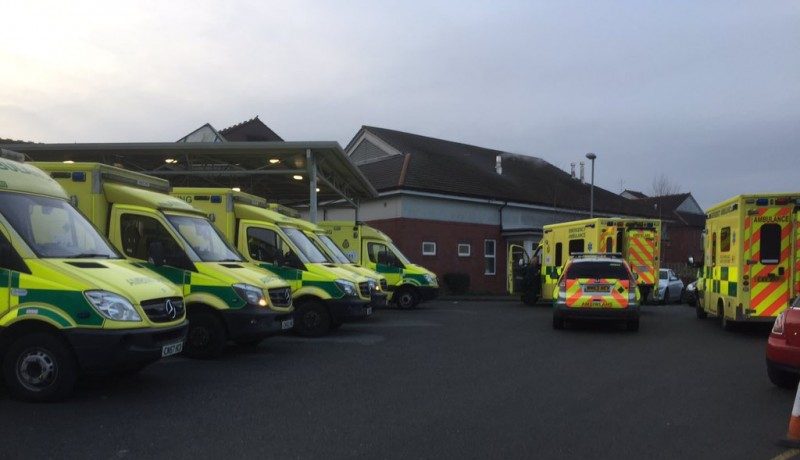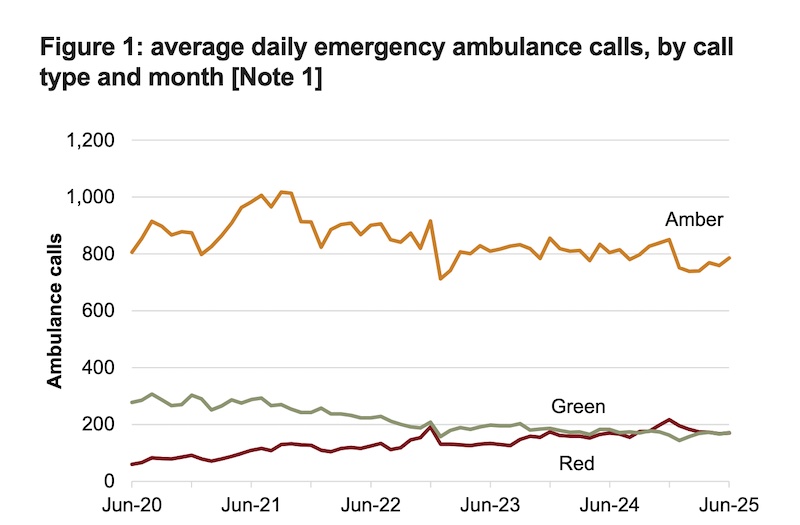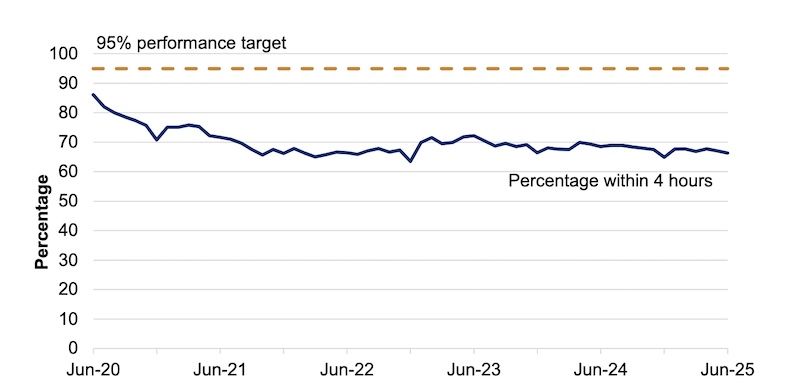
The number of patients facing the longest waits for NHS treatment has risen despite recent Welsh Government action.
In May, there were just under 10,300 open pathways waiting longer than two years, according to new figures — a 6.5% rise on the previous month.
It marks a reversal of recent progress which saw two-year waits fall in March to just under 8,400, the lowest level since April 2021.
The Welsh Government had set a target to eliminate two-year waits in most specialities by March 2023 — a target it has continually missed.
The fall in waits in the spring followed a Welsh Government investment of £50 million to cut waiting times, which have continued to soar since the coronavirus pandemic.

Picture: Welsh Government
As a result, more treatments and tests have been delivered across NHS Wales through evening and weekend appointments, regional working between health boards and renewed efforts to increase access to planned care.
Despite this, in May there were just over 796,100 patients waiting to start treatment, an increase of around 6,200 since April.
The number of open pathways is not the same as the number of patients on a waiting list, as some patients will be waiting to start more than one treatment.
In May there were about 614,300 individual patients on treatment waiting lists.
There were just over 75,500 pathways waiting longer than one year for their first outpatient appointment.
Health Secretary Jeremy Miles said it was “disappointing to see the longest waits for treatment rise”, but that he was confident Wales will see a “significant reduction” in the August figures.
Ambulance response times
The number of people waiting more than an hour to transfer from an ambulance into an emergency department in Wales fell by almost a fifth in June.
Handover delays have continued to hamper ambulance response times. In June, around 15,300 hours were lost due to handover delays.
In the past year, the number of hours lost to handover delays has quadrupled compared with 2017.

Picture: Welsh Government
In the same month, 50.7% of immediately life-threatening (category red) calls received a response within the eight-minute target.
This was 0.7 percentage points higher than the previous month, but remains well below the Welsh Government’s target of 65% of red calls receiving a response within the target time.
Throughout June there were 5,096 red calls to the ambulance service, the equivalent of 15.1% of all calls.
Emergency departments
More than 96,000 people attended an emergency department in Wales during June – an average of 3,210 visits per day.
Of this figure, just under 15,200 patients were admitted from major emergency departments.
The Welsh Government target requires that 95% of patients should spend less than four hours in an emergency department, from arrival until admission, transfer or discharge.
But in June, 66.3% of patients spent less than four hours in an emergency department.

In North Wales, 58% of patients were seen within the four hour target time.
At the Wrexham Maelor Hospital, just 38.1% of patients spent less than the target time in an emergency department.
This was the second worst in Wales, with 31.3% of attendees Ysbyty Glan Clwyd being seen within four hours.
At the region’s third major emergency department – Ysbyty Gwynedd – 56.4% were seen within the target time.
Against the eight hour target, 67.1% were seen at the Wrexham Maelor Hospital and 78.5% were seen within 12 hours.
Political response
Plaid Cymru health spokesperson, Mabon ap Gwynfor MS, said the NHS in Wales “is in need of a fresh start.”
“Seeing the longest waits rise yet again will be a matter of great disappointment to the people of Wales. Over 26 years in charge of our NHS, Labour has let Wales down,” said Mabon.
“After throwing hundreds of millions at tackling waiting lists, and failing, it’s clear that Labour’s time is up.
“Our NHS is in crisis, and it needs a fresh start.”
James Evans MS, Welsh Conservative Shadow Cabinet Secretary for Health and Social Care said: “The latest figures prove Labour’s health strategy is failing and the so-called progress they celebrated recently was just a flash in the pan.
“Progress is in reverse and it’s clear that this Welsh Government has run out of ideas.
“No one should be waiting over a year for treatment.”
Health Secretary Jeremy Miles said: “Today’s figures show that our focus on improving ambulance patient handover performance is working, with handover times in June the lowest since September 2021.
“With improvements in same-day emergency care and patient flow in place, significant progress is being made in most areas of Wales.
“Staff across Wales work hard day in, day out, to provide the best possible care for patients and I want to thank them for their continued efforts and the improvements we are seeing.
“We’ve recently set up a national, clinically-led taskforce to support these efforts and have been clear with health boards about our expectations.”
Picture: Stock image
Spotted something? Got a story? Email News@Wrexham.com
Get notified about
news from across North Wales